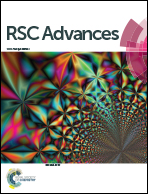An update of biocatalytic selective acylation and deacylation of monosaccharides
Abstract
Partially acylated monosaccharides (PAMs) exhibit diverse and interesting applications but due to their polyhydroxylated nature, their synthesis requires regio- and stereoselective reactions. These features are provided by biocatalytic processes and in particular by hydrolases, which offer mild conditions and selective routes for the preparation of PAMs. Since this strategy has been extensively explored, the aim of the present review is to update research on enzymatic selective acylation and deacylation of monosaccharides, focusing on enzymatic preparation of synthetic useful PAMs and drug–monosaccharide conjugates involving PAMs.


 Please wait while we load your content...
Please wait while we load your content...